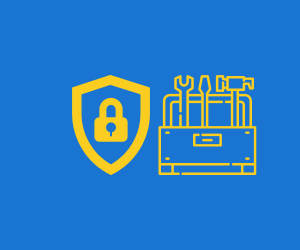If you run an architecture, engineering, or construction (AEC) firm, you’ve likely invested in solid project management tools and IT systems. But when it comes to cybersecurity, there’s one major risk area that’s often overlooked—and it’s not your firewall or antivirus software.
It’s your people.
This article will walk you through:
- The top cybersecurity threats facing AEC firms
- Why awareness training works
- Simple best practices your team can put in place today
- A free way to test a training session designed for firms like yours
Why Cybersecurity Training Matters for AEC Firms
Design and construction companies rely on a mobile, connected workforce. Project data moves constantly—from your office, to the job site, to the cloud, and often through third-party tools. That flexibility keeps your team productive—but it also creates openings for cyber threats.
Every week, AEC firms face:
- Phishing attacks disguised as vendor emails or invoice requests
- Malware downloaded through infected links or file attachments
- Insider threats caused by accidental clicks or shared credentials
Common Cyber Threats in Construction and Design Firms
Here’s what’s showing up most often for companies managing projects, data, and people across multiple locations:
1. Social Engineering (Phishing, Spear Phishing, Pretexting)
Attackers often pose as clients, subcontractors, or vendors to gain trust. They use urgency or curiosity to trick your team into clicking a link, downloading a file, or sharing login credentials.
2. Malware and Ransomware
3. Insider Threats
Employees or subcontractors with access—whether careless or disgruntled—can unintentionally expose your network to serious risks.
What Makes AEC Firms Especially Vulnerable?
- Project managers and foremen accessing data from laptops and mobile devices
- Frequent file sharing with vendors, architects, and clients
- A mix of in-house staff, field teams, and external contractors
- Pressure to move quickly, which creates more chances to overlook risks
These realities are part of doing business. But they require a better-than-basic approach to cybersecurity.
Cybersecurity Training Is a Practical First Step
You don’t need a full security overhaul to start reducing risk. What you need is a team that can spot a suspicious email, question a request for credentials, and avoid installing harmful files.
That’s exactly what cybersecurity awareness training delivers.
"People, Process, and technology - in that order" - Stephen Hicks, Security Practice Manager at Endsight
A strong cybersecurity program starts with people who know what to watch for and how to respond.
A Good Program Teaches Your Team to:
- Recognize red flags in email, text, or app messages
- Avoid risky clicks and downloads
- Report threats or irregularities before they spread
- Understand how attackers operate—so they don’t fall for it
Best Practices You Can Put in Place Today
Before you overhaul your tools, start with these 5 human-centered tactics:
- Schedule security training every 6 months for all staff with access to company systems
- Use multi-factor authentication for any app or system with project or client data
- Review who has access to shared drives, tools, and sensitive data
- Create a reporting process for suspicious activity—even if it seems small
- Update antivirus and endpoint protection across every device, including field laptops
Free Cybersecurity Awareness Session – No Obligation
At Endsight, we work with AEC firms every day to strengthen their IT security—starting with training that sticks.
You’re invited to audit our next cybersecurity fundamentals session. It’s short, relevant, and built for real-world challenges in the AEC space. No jargon. No scare tactics. Just what your team needs to avoid costly mistakes.
Final Thought: Technology Can Only Go So Far
Your systems matter—but it’s your people who open or close the door to cyber threats. With just one training every six months, you give your team the tools to protect your projects, your clients, and your reputation.
If you're responsible for IT security in your AEC firm, this is one of the simplest, smartest moves you can make.
.png)

/jclause.jpg)
